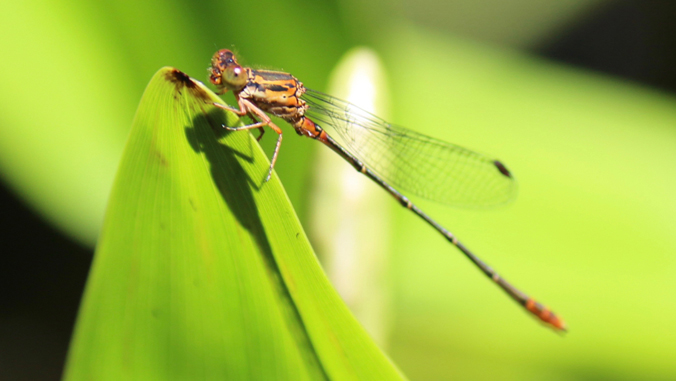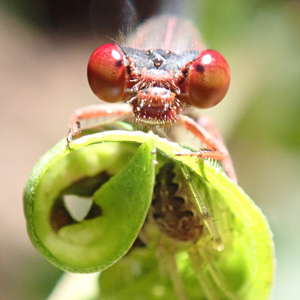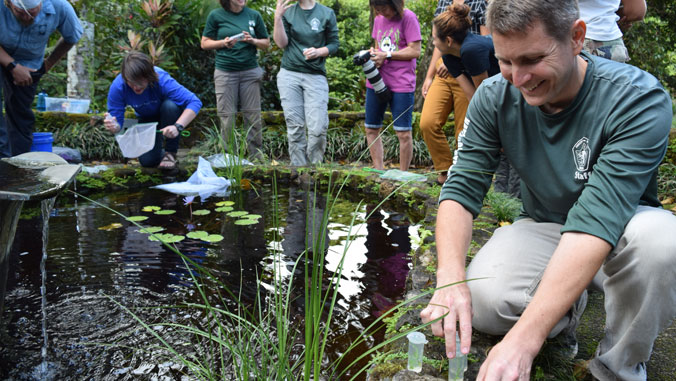
The University of Hawaiʻi at Mānoa’s Lyon Arboretum is working to re-establish damselflies to waters at the Mānoa Valley property with the state Department of Land and Natural Resources’ (DLNR) Division of Forestry and Wildlife’s Hawaiʻi Invertebrate Program (HIP).
Teams have worked to remove invasive fish from the pond and restock it with aquatic plants. They also removed dragonflies from the water before the endangered insects were introduced.
“It’s fantastic that Lyon Arboretum can collaborate with state agencies to provide additional habitat for an endangered damselfly,” Lyon Arboretum Director Rakan Zahawi said. “A core goal of ours at Lyon is to play a prominent role in the conservation of the state’s unique species and this project does just that.”

Damselflies are closely related to dragonflies but have smaller, more delicate bodies. Six species are listed as endangered, including the Orangeblack Hawaiian damselflies (Megalagrion xanthomelas; the Hawaiian name is pinapinao) that are being released at Lyon and at other sites on Oʻahu in an effort to kick-start their population and prevent yet another extinction of a native Hawaiian insect.
“Our strategy began with collecting eggs from the only existing population of this species on Oʻahu at Tripler Army Medical Center in late 2018,” said William Haines of DLNR’s HIP. “We then hatch the eggs out in our captive-rearing facility in Kailua. They hatch into aquatic larvae called naiads, then we raise them up and release them about two months later (just prior to the adult stage) into a stream or ponds. We hope after they emerge as adults they stay around the release site and lay eggs to hopefully establish a population.”
The painstaking work is being conducted in partnership with UH, the U.S. Fish and Wildlife Service and the U.S. Army’s Natural Resources Program.
Damselflies are in distress. Once abundant in Hawaiian stream and wetland environments, pressure from agriculture, stream disturbances and introduced species has resulted in many species now becoming endangered. Among their main threats are introduced fish species like the mosquito fish. As tough as their plight is, it’s equally challenging to gather reliable data on how they’re doing.
“Insects are small and cryptic,” said Haines. “They’re often camouflaged, and their behaviors can make them elusive. They often fly up into the canopy of trees so it’s really difficult to get absolute population counts.”
For more, read the DLNR news release.


